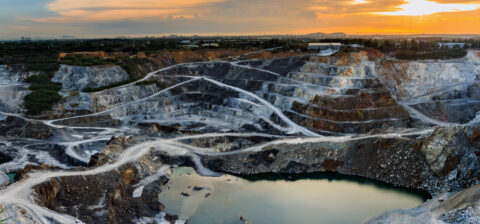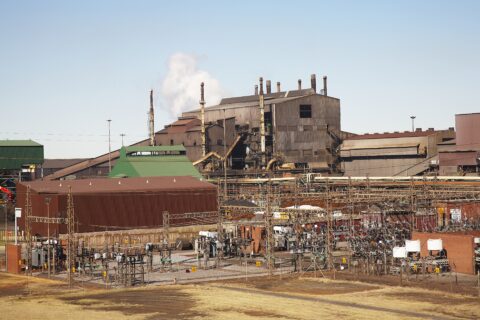SA Mining
Protecting The Health And Safety Of Employees
By Rodney Weidemann
The local mining industry is a significant employer, as a whole, with some 400 000 people working in this particular sector. Despite being a huge contributor to the nation’s overall GDP, it remains an industry marred by occupational health and safety issues.
This despite the fact that in recent years, mining has made significant strides in improving the health and safety of employees at mining sites.
It is with mining safety in mind that the Mine Health and Safety Act, 29 of 1996 (MHSA) was promulgated, notes Tyla Foster, Executive: Mine and Occupational Health and Safety (MOHS) at ENS.
“The MHSA aims to protect the health and safety of all persons at mines and does not merely apply to the health and safety of employees. Employers are obliged to protect, as far as is reasonably practicable, the health and safety of non-employees (such as visitors to a mine) and employees (which includes employees of independent contractors) performing work on or at a mine,” she says.
“This area of law is highly specialised in terms of the number of legal practitioners currently practising in the field of MOHS law. This is because it does not merely entail the application of the law, but also requires an in-depth understanding of all the technical aspects applicable to mining – such as engineering, geology, rock engineering and seismology.”
There are a number of health and safety obligations that are imposed in terms of the MHSA, adds Foster, to ensure a working environment that is healthy and safe, as far as is reasonably practicable.
“This includes an organisational structure of trained, experienced and competent people, the implementation of a comprehensive risk management system, and the provision of formal and informal (on-the-job) training of employees.”
“It also ensures the provision of standards, procedures and rules, not to mention working place audits and/or site visits, and compliance to standards. Additionally, it focuses on the safe use of machinery, equipment and explosives, and the establishment of a system of medical surveillance, along with emergency preparedness and response.”
ENS is the only law firm in Africa with a dedicated MOHS team, she continues, saying the team currently comprises 15 practitioners, six of whom are women, with a combined experience of over 45 years in advising mining houses and multinationals on compliance with MOHS law.
“ENS’s key differentiator is its ability and capacity to manage matters from start to finish, with its MOHS practitioners appearing personally in informal investigations, formal inquiries, inquests and criminal prosecutions, as well as dealing with civil court proceedings and dispute resolution,” she says.
Enforcement measures
According to Juanita Broom, Executive: Mine and Occupational Health and Safety at ENS, the Mine Health and Safety Inspectorate (MHSI) of the Department of Mineral Resources and Energy (now reconfigured as the Department of Mineral and Petroleum Resources, but has not formally been amended in terms of the MHSA), are the regulators that must enforce compliance with the MHSA, and the regulations binding thereunder.“If an Inspector of Mines (from the MHSI) has reason to believe that a provision of the MHSA (or the regulations binding thereunder) has not been complied with, the regulator has several options available to enforce compliance therewith, one of which is to issue a Notice in terms of Section 54 of the MHSA to halt mining operations in the affected area of that mine” she says.
“Further options available to an Inspector of Mines to enforce compliance include to issue a Notice in terms of Section 55 of the MHSA or to recommend the imposition of an administrative fine in terms of Section 55A of the MHSA. An administrative fine may be imposed by a Principal Inspector of Mines (from the MHSI) in terms of Section 55B of the MHSA, after the Principal Inspector of Mines has considered the recommendation of the Inspector of Mines, as well as the written representations made by the employer.”
It is important for employers to prepare comprehensive representation for the Principal Inspector to consider the same before imposing an administrative fine. It is important to note that an administrative fine may only be issued if an employer has failed to comply with the provisions of the MHSA or the regulations binding thereunder.“As a legal practitioner in the field of Mine Health and Safety Law, it is critical to have a proper understanding of the full spectrum of activities associated with mining.”
“ENS ensures that the interests of the persons and/or entities whom we represent are adequately protected in light of the extensive duties and responsibilities imposed by the provisions of the MHSA and the regulations binding thereunder, as well as the powers entrusted to the MHSI to enforce compliance with such provisions.”
To this end, she notes that staying within the ambit of the law means implementing and maintaining a working environment that is healthy and safe, as far as reasonably practicable. Employers must proactively adopt a holistic approach to health and safety, where a number of measures must form part of a comprehensive health and safety management system.
“In addition, employers are actively engaging in tripartite forums to, among others, remain abreast with any developments in the law and/or industry best practices; share learnings from accidents and/or incidents, which have occurred in the mining industry; and share information on technical advancements available to the mining industry. The aforesaid measures assist employers in exercising the necessary due diligence to ensure health and safety at its mining operations.”
“This area of law is unique in that every matter is different. It’s complex and is highly specialised. ENS is not only expert in the field of MOHS law, but has also acquired extensive knowledge and understanding of every facet of mining. This enables us to effectively protect the rights and interests of the persons and/or entities whom we represent. The exposure to the various mining operations spread throughout South Africa is an experience which is unparalleled,” concludes Broom.







 Sign-up and receive the Business Media MAGS newsletter OR SA Mining newsletter straight to your inbox.
Sign-up and receive the Business Media MAGS newsletter OR SA Mining newsletter straight to your inbox.